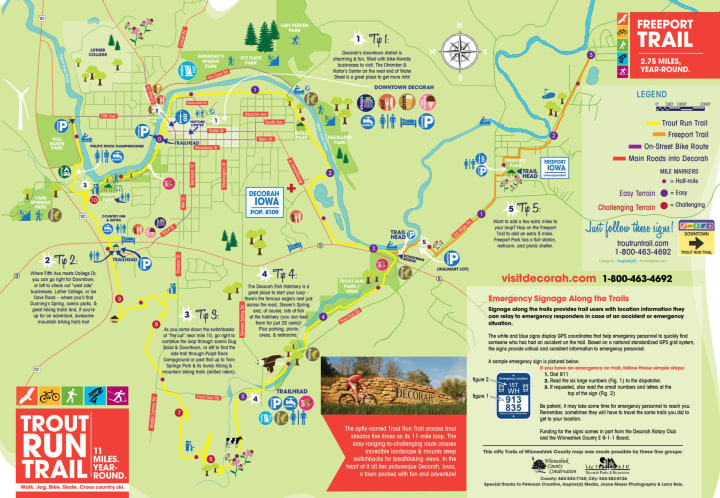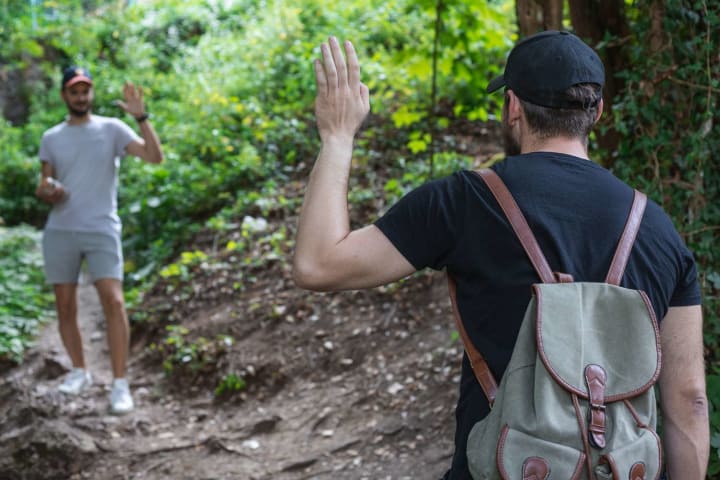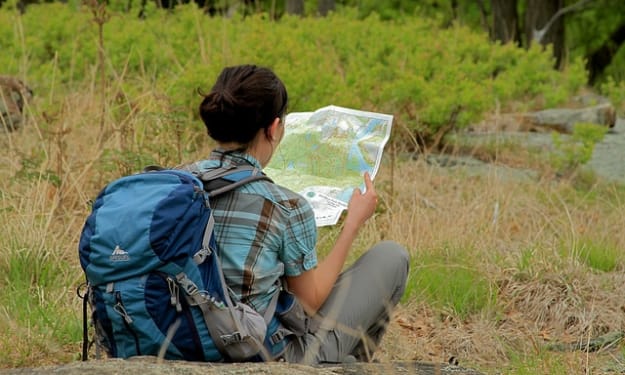
Hiking is when you take a long, vigorous walk through the countryside using trails or footpaths. People have been hiking since 125 AD. Around 47.86 million people will participate in this on the 193,500 miles of trails available to the public. Hiking is an easy, fun activity that can be enjoyed by those of all ages. People hike for many reasons, from taking a break from electronics to improving their overall health. Hiking burns 550 calories an hour. Many people who hike regularly tend to have a calmer and peaceful life. They tend to sleep better at night and be more refreshed during the day. Today is Take A Hike Day, so here are some tips to do just that.
Choosing The Right Trail

As a beginner, start off on day hikes near your home. Parks often have well-maintained trails that are marked for your safety. Avoid those with steep climbs or rocky terrain. Sites like alltrails.com can help you find the trails for your skill level. It can also warn you of upcoming deterrents. Draft up an itinerary of where you plan to go and leave it with a trusted person not going with you. Park Rangers often provide trail maps that are labeled, indicating which ones are best for your skill level. In the beginning, you’ll need to pick the ones you can handle. Save the more advanced trails for later. The Park Rangers can also answer questions you have about a particular trail.
Packing For The Trip

Even if you are going out for a simple day hike, you’ll need to bring a few things with you to make the trip go as smoothly as possible. Check the weather forecast on the trail to dress accordingly. Even if rain isn’t in the forecast, you should still bring a poncho. Invest in sturdy hiking boots that you’ve broken in prior to the trip. A filled one-gallon water bottle should be plenty enough to keep you hydrated, but you should still bring a water purifier straw just in case. Pack plenty of non-perishable, nutrient-dense food to keep hunger away. Starting off, you don’t need a fancy hiking pack, any backpack will do. Even if you don’t plan to stay out past sunset, you should still carry a flashlight on you.
The Local Flora and Fauna

One perk of hiking is being able to admire the beauty of nature. Try not to stomp on the local plant life while admiring it. Don’t take anything with you as the local wildlife depends on it for survival. The only thing you should be picking up from the trail is any trash you have. Leave the trail of how you found it. If you come across any wildlife, leave them alone. There is a good chance if you approach it, it’ll attack you. When walking in areas with poisonous plants and animals, wear long pants or gaiters. If going through bear country, bring some bear mace. If unsure of what to expect, consult with the Park Rangers about what thrives in that area to plan appropriately.
Other Hikers

No matter when you hike, you probably won’t be alone on the trail. Here are some social etiquette rules you are expected to follow. Bikers are expected to yield to those on foot, while those on foot yield to horses. If passing someone, announce where you are going by them to make them aware of your presence. If the hiker is going uphill, they have the right of way on the trail no matter what. When on a group hike, form a single file line that takes up no more than half the trail. Make sure everyone is walking at the same pace as the others because you don’t want to leave someone behind. If you are stopping, step aside to let the others behind you pass.
Handling Common Emergencies

Hiking is like any other physical activity, which means there is some risk of being injured. Here is how you can treat the most common hiking injuries. Cuts and blisters are the number one medical emergency a hiker can experience. Blisters are caused by friction between your skin and ill-fitted socks or boots. To prevent them, make sure you wear long socks and properly fitted boots. To treat, clean the wound and cover it with a bandage. Don’t pop it as this can lead to infection. You will also treat a cut like you would a blister by cleaning and dressing the wound. If it is big and bleeding profusely, put a tourniquet on it while you wait for medical professionals. The uneven ground and animal holes can cause sprains or breaks. To treat a sprain, you’ll need to RICE it:
Rest it by putting as little weight on it as possible.
Ice it with an ice pack wrapped in something for one hour.
Compress using an elastic bandage or an unused t-shirt. Wrap it firmly so it limits movement without cutting off circulation.
Elevate the injury slightly above the person’s heart.
If you enjoy hiking, check out my article on what to do if you become lost at https://vocal.media/earth/where-do-i-go-zf2oz07u9.
About the Creator
M.L. Lewis
Welcome to my little slice of pie. This blog will primarily focus on prepping and homesteading skills with a sprinkle of fiction every now and then.






Comments (1)
Can I ask you a huge favor my name is Samuel I’m a 3x selling author and blogger I’m about 3,000 more reads away from an opportunity for my article- the person not parent to be featured in parents magazine I would be truly appreciative if you could just read the article for me it’s completely free, and takes maybe 20 seconds- is their any way you could give it a read for me- and help me get one step closer to one of my dreams?